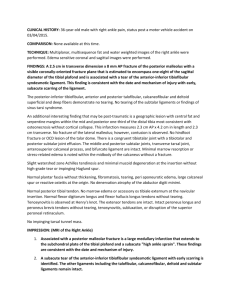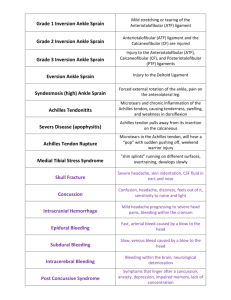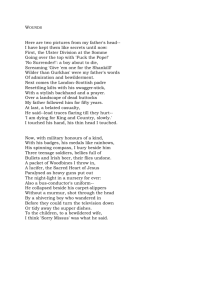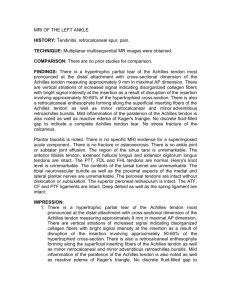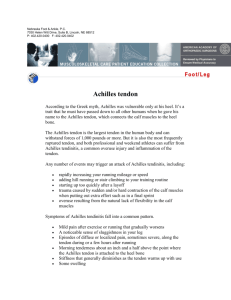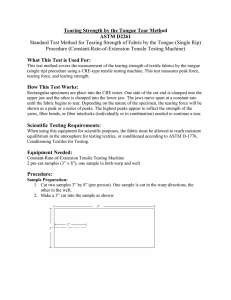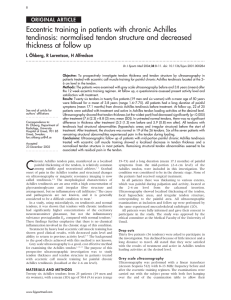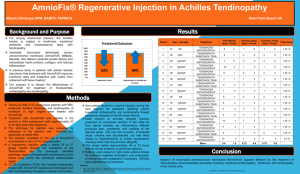MRI of the Right Ankle and Achilles Tendon
advertisement
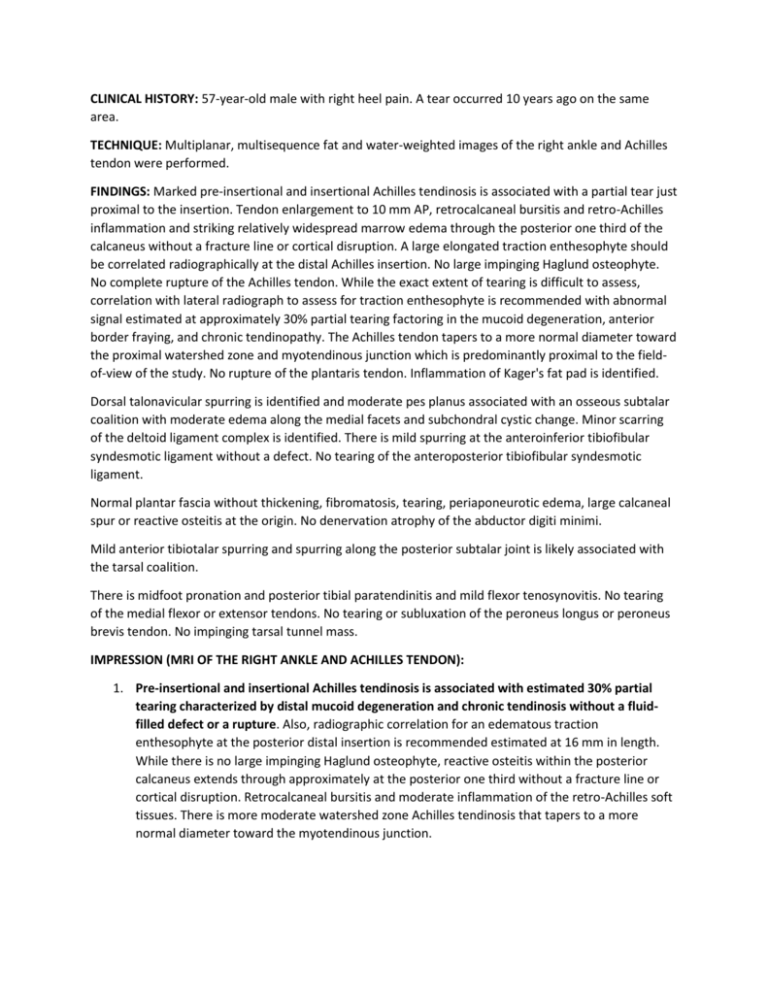
CLINICAL HISTORY: 57-year-old male with right heel pain. A tear occurred 10 years ago on the same area. TECHNIQUE: Multiplanar, multisequence fat and water-weighted images of the right ankle and Achilles tendon were performed. FINDINGS: Marked pre-insertional and insertional Achilles tendinosis is associated with a partial tear just proximal to the insertion. Tendon enlargement to 10 mm AP, retrocalcaneal bursitis and retro-Achilles inflammation and striking relatively widespread marrow edema through the posterior one third of the calcaneus without a fracture line or cortical disruption. A large elongated traction enthesophyte should be correlated radiographically at the distal Achilles insertion. No large impinging Haglund osteophyte. No complete rupture of the Achilles tendon. While the exact extent of tearing is difficult to assess, correlation with lateral radiograph to assess for traction enthesophyte is recommended with abnormal signal estimated at approximately 30% partial tearing factoring in the mucoid degeneration, anterior border fraying, and chronic tendinopathy. The Achilles tendon tapers to a more normal diameter toward the proximal watershed zone and myotendinous junction which is predominantly proximal to the fieldof-view of the study. No rupture of the plantaris tendon. Inflammation of Kager's fat pad is identified. Dorsal talonavicular spurring is identified and moderate pes planus associated with an osseous subtalar coalition with moderate edema along the medial facets and subchondral cystic change. Minor scarring of the deltoid ligament complex is identified. There is mild spurring at the anteroinferior tibiofibular syndesmotic ligament without a defect. No tearing of the anteroposterior tibiofibular syndesmotic ligament. Normal plantar fascia without thickening, fibromatosis, tearing, periaponeurotic edema, large calcaneal spur or reactive osteitis at the origin. No denervation atrophy of the abductor digiti minimi. Mild anterior tibiotalar spurring and spurring along the posterior subtalar joint is likely associated with the tarsal coalition. There is midfoot pronation and posterior tibial paratendinitis and mild flexor tenosynovitis. No tearing of the medial flexor or extensor tendons. No tearing or subluxation of the peroneus longus or peroneus brevis tendon. No impinging tarsal tunnel mass. IMPRESSION (MRI OF THE RIGHT ANKLE AND ACHILLES TENDON): 1. Pre-insertional and insertional Achilles tendinosis is associated with estimated 30% partial tearing characterized by distal mucoid degeneration and chronic tendinosis without a fluidfilled defect or a rupture. Also, radiographic correlation for an edematous traction enthesophyte at the posterior distal insertion is recommended estimated at 16 mm in length. While there is no large impinging Haglund osteophyte, reactive osteitis within the posterior calcaneus extends through approximately at the posterior one third without a fracture line or cortical disruption. Retrocalcaneal bursitis and moderate inflammation of the retro-Achilles soft tissues. There is more moderate watershed zone Achilles tendinosis that tapers to a more normal diameter toward the myotendinous junction. 2. Evidence of an osseous subtalar coalition with subchondral cystic change and marrow resorption/marrow stress edema along the middle facet and secondary dorsal talonavicular beaking. Mild secondary osteoarthritis at the tibiotalar and posterior subtalar joint. 3. Mild midfoot pronation. No tearing of the medial flexor, extensor, or peroneal tendons. There is mild posterior tibial paratendinitis. 4. Minimal scarring of the deltoid ligament complex and mild spurring at the origin of the anteroinferior tibiofibular syndesmotic ligament.

